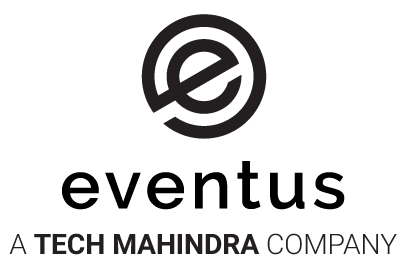Meeting the Self-Service Knowledge Management Challenge
15
JULY 2016
Eventus
Recently, we published a whitepaper called The Future of Knowledge Management that has proven to be very popular with our readers, setting an Eventus record for new whitepaper downloads. One of the topics the contact center consulting experts at Eventus covered in this paper is the evolution of self-service and how to meet the self-service knowledge challenge for increasingly demanding customers.
Over the next several decades we will begin to see a shift in how technology is used. Generation X first introduced the concept of web self-service. In its earliest forms that meant providing a list of static Frequently Asked Questions (FAQs), that later became dynamic FAQs as the technologies became more sophisticated and “learned” customer’s browsing behaviors.
Generation Z is now coming of age and is the first generation to grow up with technology in every facet of their lives; interactive 3D technology that allows them to engage with information in ways that was only dreamt about a couple decades ago. According to a recent report, Generation Z can multi-task over five screens (TV, phone, laptop, desktop and either a tablet or some handheld gaming device) and their attention span is only 8 seconds. That was not a misprint Watch this clever video if you think it is impossible to communicate anything of value in 8 seconds.
For years now we have realized that our customers want, even expect, a web self-service experience that allows them to find answers quickly and we have met that challenge with concepts such as serving up dynamic FAQs and deploying federated search. We have also thought about what to do when web self-service just can’t solve our customer’s problem, by providing seamless interactions between channels, so they do not have to repeat their issue. The challenge now isn’t with getting customers to engage initially in self-service, or even in providing them a seamless multichannel experience – the challenge is doing all of that in 8 seconds or less, all while making it highly engaging. If you do not, they will have moved on before you have the opportunity to engage pro-actively.
So how do we meet this new challenge head on? We do this by providing information that is instantly – even preemptively – accessible, highly engaging, and quickly consumed. Forrester recently published their Top 10 Trends in Customer Service. Let’s explore trends three and four to learn how the technology of tomorrow will help make this possible.
Insights from Connected Devices will Trigger Preemptive Service
Trend 3 is Insights From Connected Devices Will Trigger Preemptive Service. Remember those five devices that Generation Z is actively using at any given time? They are all connected and share a wealth of information about what our customers are doing, whom they are doing it with, and for what they are searching. According to Forrester’s research, “Connected devices are expected to proliferate at a rate of 50 billion by 2020, and the Internet of Things (IoT) is becoming a business reality. Companies are starting to use support automation to diagnose preemptively and fix issues with minimal human intervention. Preemptive service wins on all fronts: faster resolution at lower costs, deeply personalized engagements, better planning, and anticipation of future customer needs.”
Forrester warns us though that we must keep an eye on emerging interoperability standards. While the information we need about our customers may be there, the ways in which we access it will create constraints such as data messaging formats, network conditions, and disparate data models.
Knowledge Will Evolve from Dialog to Cognitive Engagement
The next trend, trend 4, centers on knowledge management and is one of the key ways in which organizations can begin to make a huge impact in the short term. Trend 4 is Knowledge Will Evolve From Dialog To Cognitive Engagement. Traditional knowledge management practices often generate vast amounts of overhead as organizations believe they must develop lengthy processes for content control, thus ensuring that each article published has been thoroughly vetted by every subject matter expert who has any interest in the topic at hand. Sometimes this process can take days, or even weeks, to work through. Meanwhile, your customers are not finding what they need from your website and have moved on, perhaps permanently.
Knowledge Centered Support (KCS) taught us that it is possible to “integrate the creation and maintenance of knowledge into the process of interaction;” meaning that it becomes the way we do support and not an end result of the support process itself. KCS was designed by the Consortium for Service Innovation, and it drives the generation and publishing of content to the front lines, thus empowering agents to provide support AND knowledge. KCS fundamentally teaches that “the organization must shift to a perspective that sees knowledge as an asset owned and maintained by the team, not by an individual or a small group of dedicated content creators.” KCS is often difficult for organizations to adopt, however, because organizations feel as though they are giving up control of their content and somehow putting themselves at risk.
This notion of controlling content creation is becoming even more notional as time goes on. Remember Generation Z and how easily connected they are? Remember too that they have a very short attention span? Innovative organizations will look at ways to reduce the manual overhead of traditional knowledge management by exploring cognitive engagement solutions — “interactive computing systems that use artificial intelligence to collect information, automatically build models of understanding and inference, and communicate in natural ways (Forrester).” Until recently, these solutions explored artificial intelligence as a means to improve student learning in the classroom. Now it has become apparent that these solutions can not only learn and predict what our customers want, but they can be used to automate knowledge creation that is highly relevant, personalized, and engaging. These solutions are all about anticipating intent, getting on the front side of a customer’s need, perhaps even before they realize they need it.
In a recent blog, Remy Claret cited that these technologies are transforming the way companies engage with customers by enabling immediate responses, providing pinpoint accuracy, and allowing that information to be instantly shared across channels. Through cognitive engagement, eight seconds becomes easily obtainable, as does the ability for your organization to leverage that knowledge to learn about customer needs and uncover new streams of revenue.
To Learn More
If you would like to learn more about the future of knowledge management, please click the link to download a free copy of the whitepaper.
Similar Blogs
Built In Honors Eventus in Its Esteemed 2024 Best Places To Work Awards
Denver, CO // January 9, 2024 —Built In today announced that Eventus was honored in its 2024 Best Places To Work Awards. Specifically, Eventus earned a place on Best Midsized Places to Work in Colorado in Denver. The annual awards program includes companies of all sizes, from startups to those in the enterprise, and honors both remote-first employers as well as companies in large tech markets across the U.S.
Eventus Solutions Group, a Tech Mahindra Portfolio company, Launches Navixus™
Eventus, a leading provider of digital transformation, consulting, and business re-engineering solutions, has announced today the launch of a new business unit Navixus™, within Tech Mahindra Business Process Services (BPS). Navixus™ will combine Tech Mahindra’s Business Process Services’ automation, analytics, and consulting with Eventus’ customer experience (CX) and transformation capabilities to offer a holistic digital transformation suite to customers.


